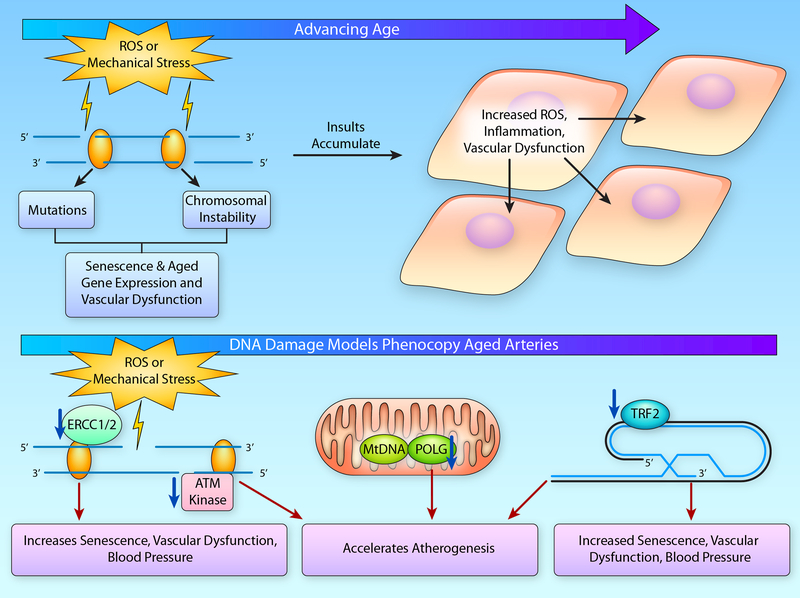Figure 6. DNA Damage with Aging.
(A) With advancing age, DNA damage resulting from reactive oxygen species (ROS) or mechanical stress accumulates leading to mutations or chromosomal instability that ultimately contributes to cellular senescence or altered gene expression that drives the age-related pro-inflammatory and pro-oxidant vascular phenotype. This cellular dysfunction acts in an autocrine and paracrine manner affecting the local milieu and exacerbating endothelial dysfunction. (B) Indeed, DNA damage induced by ionizing radiation leads to cellular senescence and vascular dysfunction. Likewise, experimental manipulation genes involved in telomere capping, such as telomeric repeat binding factor (TRF)-2, and those involved in both nuclear DNA repair, including excision repair cross-complementation group (ERCC)-1/2 and ataxia-telangiectasia mutated (ATM) kinase, as well as in mitochondrial (Mt) DNA repair, such as polymerase gamma (POLG), will lead to increases in cellular senescence, vascular dysfunction and atherogenesis. (Illustration Credit: Ben Smith).

